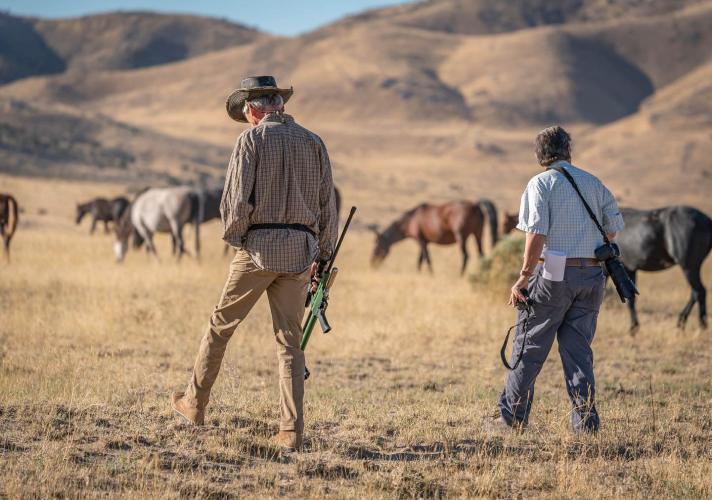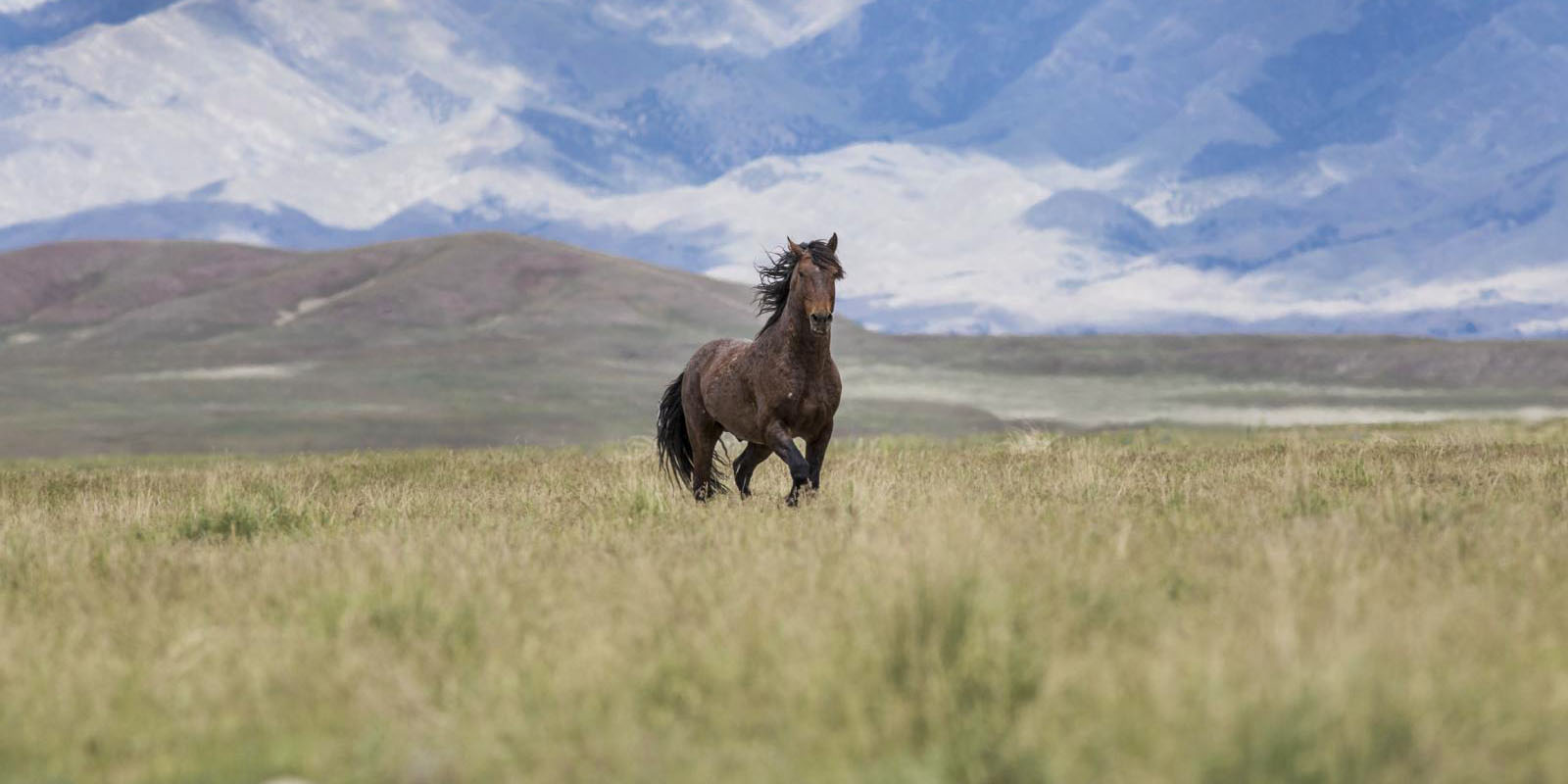Nevada
The Virginia Range mustangs have inhabited a 300,000-acre habitat in the greater Reno, Nevada area for a century and a half. They are deeply entwined in the local culture — with statues of wild horses gracing local businesses and highway overpasses. They are part of the history of this area of the wild West and are treasured by residents and businesses alike.

Now through a unique partnership with the State of Nevada and the local Nevada business community, AWHC is implementing a groundbreaking PZP fertility program that’s proving humane management of wild horses is possible in large wild horse populations living in large habitat areas. With a team of 14 darters and 10 documenters who identify horses in our wild horse database, our program has delivered 1,070 fertility control treatments (primers and boosters) to 737 individual mares since the program began on April 9, 2019. By way of contrast (so you can get an idea of how hard our volunteers are working!), the Bureau of Land Management (BLM) with its $80-million-a-year wild horse and burro program budget delivered 702 fertility control treatments in all of 2018.
This program is setting important precedents and has been made possible with political support from Governor Steve Sisolak and his Departement of Agriculture, former Assembly Minority Leader Jim Wheeler, Nevada business leader and Storey County Commissioner Lance Gilman, Jeff Berns, CEO of Blockchains LLC and the other businesses at the Tahoe Reno Industrial Center, and thanks to the participation of local organizations including the Virginia Range Wildlife Protection Association, Wild Horse Preservation League, Wild Horse Connection and Hidden Valley Wild Horse Protection Association.
Utah
The famed wild horse population of the Onaqui Mountain Herd Management Area (HMA), located an hour south of Salt Lake City, is perhaps the most popular and photographed mustang herd in the country. Sadly, the HMA was the site of a helicopter roundup this fall, which removed over 200 horses from their homes on our public land in this area.

However, there is a positive side to this story: the BLM in Utah (particularly the West Desert District) is committed to using fertility control in this HMA to make sure roundups become a thing of the past. AWHC is pleased to provide assistance to the BLM and the Wild Horses of America Foundation to expand the existing PZP program in this HMA. This fall, we sent our darter Steve Paige to Utah where, working with BLM and Wild Horses of America, 81 mares were darted in just six days! In addition, we’re working with Sam Couper of Onaqui Catalogue to provide a comprehensive database of the Onaqui horses for the BLM and Wild Horses of America to use to assist with the fertility control efforts with this herd. (Sam also just became a certified darter for the PZP program - congrats Sam!)
Onaqui is a great example of wild horse advocates and BLM working together to ensure humane solutions are implemented for the management and protection of our cherished wild herds!
Arizona
Deep in the Tonto Forest near Phoenix, AZ, on the banks of the beautiful Salt River, is an amazing sight. A herd of magnificent wild horses who count the river itself as an important part of their habitat. Young foals are taught by their mothers to cross the river at a young age and even to graze on the eelgrass that grows in the river during the late summer and early fall months!
Back in July 2015, a Forest Service plan to round up all of the Salt River horses (which could have resulted in their slaughter since they are not federally protected) provoked massive public outrage and near-unanimous opposition from the Arizona Congressional delegation and Governor Doug Ducey. In 2016, the Legislature passed the Salt River Horse Protection Act to protect this cherished herd in its historic habitat along the Salt River, and in May 2018, the state awarded our coalition partner, the Salt River Wild Horse Management Group, a contract to humanely manage the horses.
AWHC has worked closely with the SRWHMG since 2015 to protect these horses — from opposing the roundup to supporting protective legislation to financially sponsoring year 1 of the group’s highly successful PZP fertility control program. More recently, we’ve worked shoulder to shoulder to defend the horses in a highly imbalanced “collaborative” process that included a majority of stakeholders who seek massive reductions in the number of horses and the size of their habitat. Sadly, the biased process excluded important stakeholders who value the horses, including local businesses for whom the herd is an economic resource and the thousands of tourists who come to the Forest to view these famed wild mustangs. We are also working to oppose a Forest Service plan to construct a fence along the banks of the Salt River, which would cut horses and visitors off from the river and trap 150-200 horses on Salt River Maricopa Indian Community land on the other side of the river, cutting them off from their historic migrating routes and likely causing them to starve to death.
Through it all, AWHC remains grateful to Governor Doug Ducey and the Arizona Department of Agriculture, led by Director Mark Killian, for their commitment to doing right by the horses and upholding state law protecting them. We also greatly admire the SRWHMG and its founder Simone Netherlands for the incredible comprehensive management program they have created to protect and humanely manage this highly visited and visible wild horse herd



